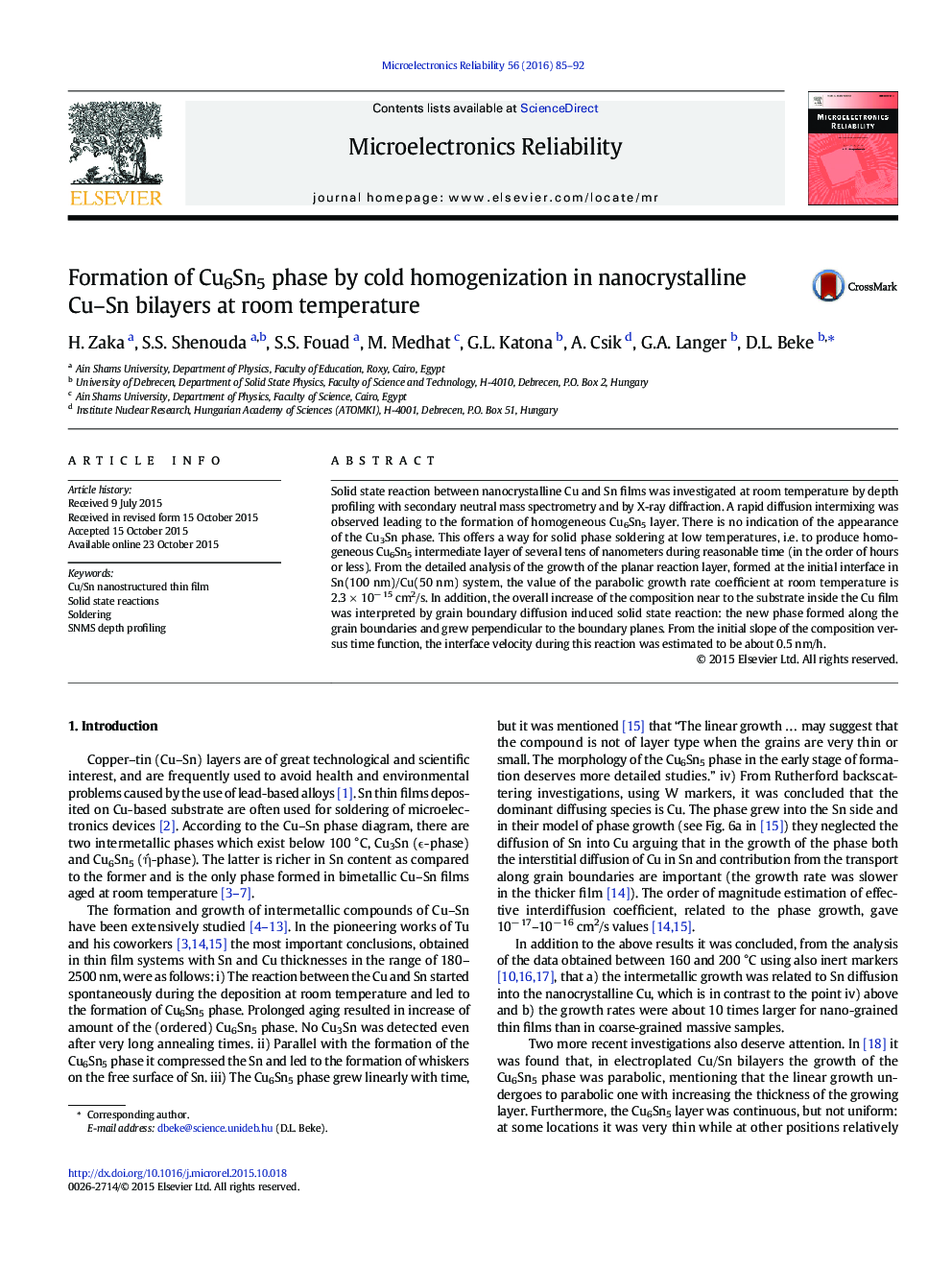| Article ID | Journal | Published Year | Pages | File Type |
|---|---|---|---|---|
| 548119 | Microelectronics Reliability | 2016 | 8 Pages |
•Solid state reaction at room temperature in nanocrystalline Sn/Cu films results in formation of homogeneous Cu6Sn5 phase.•It offers a way for solid phase soldering at low temperatures during reasonable time.•The growth of the new phase is controlled by grain boundary diffusion and by diffusion induced grain boundary migration.
Solid state reaction between nanocrystalline Cu and Sn films was investigated at room temperature by depth profiling with secondary neutral mass spectrometry and by X-ray diffraction. A rapid diffusion intermixing was observed leading to the formation of homogeneous Cu6Sn5 layer. There is no indication of the appearance of the Cu3Sn phase. This offers a way for solid phase soldering at low temperatures, i.e. to produce homogeneous Cu6Sn5 intermediate layer of several tens of nanometers during reasonable time (in the order of hours or less). From the detailed analysis of the growth of the planar reaction layer, formed at the initial interface in Sn(100 nm)/Cu(50 nm) system, the value of the parabolic growth rate coefficient at room temperature is 2.3 × 10− 15 cm2/s. In addition, the overall increase of the composition near to the substrate inside the Cu film was interpreted by grain boundary diffusion induced solid state reaction: the new phase formed along the grain boundaries and grew perpendicular to the boundary planes. From the initial slope of the composition versus time function, the interface velocity during this reaction was estimated to be about 0.5 nm/h.
